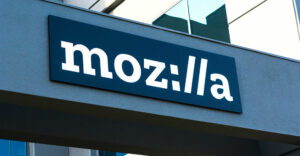
Previous installment: Making Linux Feel at Home
Individuals and businesses migrate to Linux for a variety of reasons. Disgust with Microsoft or Apple regimentation and software limitations are but two of them.
For some, the greater flexibility that comes from open source software, as well as better cost and productivity controls, are the driving factors for a move to the Linux OS. The benefits vary depending on the use case and the desktop or server configurations employed.
Employing Linux to run your business or drive your personal computing equipment takes some preparation. New software takes some time to learn. However, planning for a smooth migration will make for a successful and rewarding move.
The migration process is not limited to users of Microsoft Windows and Apple computers. A strong user base exists in enterprise settings for other operating systems as well.
There is still something religious in some enterprise circles surrounding Unix in the embedded space. Some people cling to OpenSolaris. Another popular OS in some quarters is BSD, noted Bruce Tolley, vice president of technical and solutions at Solarflare.
“In the 1990s, IT people often rallied around the notion that no one ever got fired for buying IBM. In the last year or two, you could argue that today if you are an IT guy who manages servers at a large company, you are not going to get fired for hiring Linux,” he told LinuxInsider.
Lure of Linux
Linux has grown up in the last decade and has shed its reputation for being hard to install, configure and use. Linux also has gotten past concerns that it is not secure or not safe because anybody can view the source code.
On the high-performance side, we are seeing a lot of customers making the move to Linux. There was some hesitancy for companies to move away from Solaris, noted Tolley.
“Regarding the OS installed in the fortune 100 companies, I would argue that over 50 percent now are using Red Hat Enterprise Linux,” he added.
Letting Go of Legacy
Cultural issues are partly responsible for the differences in operating system deployments, noted Francois Chevresson, director of professional services at Bonitasoft.
“From a cultural perspective, European governments place much more regulation on privacy and access to one’s data. In the U.S., the privacy and access is considered to be part of the price one pays for the economy and third-party maintenance provided by cloud deployment,” he told LinuxInsider.
With the GUIs getting better and better, it has become much easier to get the tech guys coming out of school to start using the Linux desktop as well as Linux servers, said Mike Vitale, chief technology officer for TalkPoint.
“As migration goes, when it comes to power users, it is easier. When it comes to general users in the SMBs, it is a little more difficult. You have to make sure that the components are there,” Vitale told LinuxInsider.
Moving Moguls
There is also the issue of sociological preference for OS choice, based on the IT director’s computer science degree, Tolley suggested. IT preferences might force some enterprise backends to linger longer without Linux.
Still, Linux servers are clearly the migration path of choice, according to Rick Sizemore, director of the technology transformation practice atAlsbridge.
“I don’t talk to any customers today who are looking to deploy more Windows servers. They may be adding more users per existing Windows server or something like that. Linux is more often than not the platform of choice,” Sizemore told LinuxInsider.
In many industry sectors, migrating to Linux happens quietly. Deploying Linux also can be a segmented process, depending on the size of the business operation and the computing needs being addressed. Sometimes, the server services run on Linux initially, and employee workstations get Linux and Android devices later.
Bonitasoft’s computer applications are based on Java, which makes them easy to deploy on a number of platforms.
“This approach helps to simply a transition to Linux,” said Chevresson. “Using software deployed through a cloud installation masks most of the problems in moving to Linux.”
Making the Makover
Successfully migrating to Linux — whether on back-office servers or cube farm workstations — might simply come down to one word: planning. Or perhaps one phrase: Be prepared.
As with any OS, you should put a lot of thought, planning and testing into your initial deployment. However, success goes beyond that, according to Shaun Sellers, senior product manager at Vision Solutions.
“Similar to other operating systems, Linux will still need to be maintained with patches and updates which should be vetted in your environment through some sort of change-control process,” he told LinuxInsider.
Linux is safe and secure and not prone to many of the quirks that plague Microsoft products. Still, when it comes to the care and feeding of Linux, it should be treated like any other mature enterprise class operating system that is running your business, noted Sellers.
Demystifying the Move to Linux
One of the initial barriers to migrating to the Linux OS, especially the desktop, is FUD. Fear, uncertainty and doubt continue to plague the uniformed.
The Linux environment has many distros that are very similar to Windows. Users have little difficulty making the switch, according to Tomas Zubov, CEO of IceWarp. First, however, users and company leaders have to know about Linux.
“I am seeing situations where people are expressing great surprise that modern Linux systems are so much like Windows in terms of the GUI. They had heard Linux required extensive use of the command line much like old-school Unix systems,” Zubov told LinuxInsider.
This myth is now falling away as people are discovering that Linux is much like Windows but has a freer environment. People can easily work with Linux, he said, adding that he sees many cases where people were afraid of Linux but are now moving to it.
Substituting Software
The demand for the Linux desktop has steadily been growing. That demand led IceWarp to develop an enterprise-strength replacement product for messaging and email needs of Linux users.
“One of the trends we see is customers migrating from Microsoft Windows who do not want to leave behind the Microsoft Exchange email system,” Antonin Prukl, director of development at IceWarp, told LinuxInsider.
The application software that computer users leave behind is rarely much of an issue to deter their migration to Linux, agreed IceWarp’s Zubov. They are moving away from Windows services because of the software and service limitations. The process of becoming familiar with new desktop software in Linux is not any different.
“There is always an adjustment period when you switch applications within an operating system, but I don’t see that as being an obstacle for migrating to Linux,” said Zubov. “People switch to Linux servers because they can set it up exactly to meet their needs. That is the power of open source that attracts enterprise users. They are able to maximize their server use according to their needs. This is nearly impossible for them to do with a Windows server.”




















































I don’t agree or disagree with Linux deployments but at the same time I don’t think its as easy as the article portrays (migrating to Linux desktops anyway). But what I personally find funny, here at the office we had talk wether to implement VMWware or Hyper-V and chose the later. When I asked the CEO 3 times why, all he could give me was "because we are a Microsoft shop". I know what that use to mean (IT skill level, etc), but nowadays that comment make no sense without know what being a Microsoft Shop gives that company.